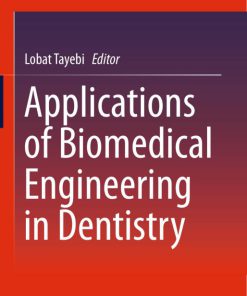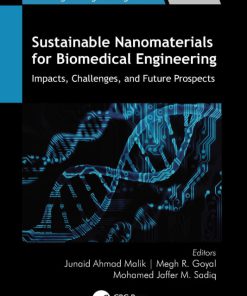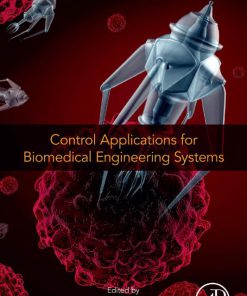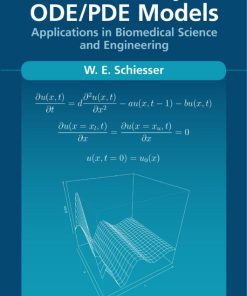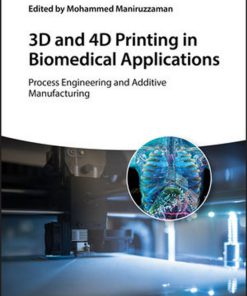(Ebook PDF) Nanomaterials: Biomedical Environmental and Engineering Applications 1st edition by Suvardhan Kanchi, Shakeel Ahmed, Myalowenkosi Sabela, Chaudhery Mustansar Hussain 1119370361 9781119370369 full chapters
$50.00 Original price was: $50.00.$25.00Current price is: $25.00.
Authors:Suvardhan Kanchi, Shakeel Ahmed , Series:Biomedical [129] , Author sort:Suvardhan Kanchi, Shakeel Ahmed , Languages:Languages:eng , Published:Published:Jun 2018 , Publisher:Wiley
Nanomaterials: Biomedical, Environmental, and Engineering Applications 1st edition by Suvardhan Kanchi, Shakeel Ahmed, Myalowenkosi I. Sabela, Chaudhery Mustansar Hussain – Ebook PDF Instant Download/DeliveryISBN: 1119370361, 9781119370369
Full download Nanomaterials: Biomedical, Environmental, and Engineering Applications 1st edition after payment.

Product details:
ISBN-10 : 1119370361
ISBN-13 : 9781119370369
Author : Suvardhan Kanchi, Shakeel Ahmed, Myalowenkosi I. Sabela, Chaudhery Mustansar Hussain
The evolution in the nanotechnology world clearly signifies a need for a broader understanding of the subject and this book will contribute to the effort.
Nanostructure science and technology is a broad and interdisciplinary area of research and development that has been growing explosively in the past decades. The contents of this book include mainly the fundamentals of nanoparticles, state-of-the-art in synthesis and characterization of nanomaterials, as well the influence of nanomaterials on the analytical systems (macro to micro & lab-on-a-chip) for biomedical, environmental and engineering applications.
Nanomaterials: Biomedical, Environmental, and Engineering Applications 1st Table of contents:
Part I: Synthesis and Characterization
Chapter 1: Synthesis, Characterization and General Properties of Carbon Nanotubes
1.1 Introduction
1.2 The History of Carbon Nanotubes
1.3 Graphene
1.4 Graphite
1.5 Fullerene
1.6 Rehybridization
1.7 Structure of Carbon Nanotubes (CNTs)
1.8 Classification of CNTs
1.9 Crystal Structures of Carbon Nanotubes
1.10 Synthesis Methods
1.11 The Purification Process of CNTs
1.12 Mechanism of Growth CNTs
1.13 Properties of Carbon Nanotubes
1.14 Applications of Carbon Nanotubes
1.15 Characterization of CNTs
1.16 Composite of CNTs/Semiconductors
1.17 Recent Updates on Synthesis of CNTs
References
Chapter 2: Synthesis and Characterization of Phosphorene: A Novel 2D Material
2.1 Introduction
2.2 Synthesis of Phosphorene
2.3 Characterization of Phosphorene
2.4 Environment Stability Issue of Phosphorene
2.5 Summary and Future Prospective
References
Chapter 3: Graphene for Advanced Organic Photovoltaics
3.1 Introduction
3.2 History of Graphene
3.3 Structure of Graphene
3.4 Graphene Family Nanomaterials
3.5 Properties of Graphene
3.6 Graphene for Advanced Organic Photovoltaics
3.7 Conclusion
References
Chapter 4: Synthesis of Carbon Nanotubes by Chemical Vapor Deposition
4.1 Introduction
4.2 Synthesis Methods
4.3 The Parameters of CVD
4.4 Deformations and Defects in Carbon Nanotubes
4.5 Characterization of CNTs
4.6 Conclusion
References
Part II: Environmental and Engineering Applications
Chapter 5: A Review of Pharmaceutical Wastewater Treatment with Nanostructured Titanium Dioxide
5.1 Introduction
5.2 Heterogeneous Photocatalysis
5.3 Pharmaceuticals in the Environment
5.4 Role of TiO2 in Photocatalysis for Degradation, Mineralization, and Transformation Process of Pharmaceuticals
5.5 Applications
5.6 Conclusion
Acknowledgment
References
Chapter 6: Nanosilica Particles in Food: A Case of Synthetic Amorphous Silica
6.1 Introduction
References
Chapter 7: Bio-Sensing Performance of Magnetite Nanocomposite for Biomedical Applications
7.1 Introduction
7.2 Potential Applications of Magnetic Nanoparticles
7.3 Conclusion
References
Chapter 8: The Importance of Screening Information Data Set in Nanotechnology
8.1 Introduction
8.2 Review of the Literature
8.3 Behavioral Patterns of Engineered Nanoparticles
8.4 Conclusions and Recommendations
References
Chapter 9: Nanomaterials for Biohydrogen Production
9.1 Introduction
9.2 Major Biohydrogen Production Pathways
9.3 Nanaparticle Effects on Biohydrogen Production
9.4 Biohydrogen Producing Associated with Immobilized Enzymes (Cellulases and Hydrogenases)
9.5 Outlook and Concluding Notes
Acknowledgment
References
Chapter 10: A Framework for Using Nanotechnology in Military Gear
10.1 Introduction
10.2 Literature Review
10.3 Application of Nanotechnology in the Military
10.4 Conclusions
References
Part III: Biological Applications
Chapter 11: Plasmonic Nanopores: A New Approach Toward Single Molecule Detection
11.1 Introduction
11.2 Sensing Principles of Plasmonic Nanopore
11.3 Optical Properties
11.4 Improving Performance
11.5 Surface Patterning
11.6 Applications – Next-Generation DNA Sequencing and Beyond
11.7 Some Other Sensing Examples
11.8 Future Perspectives
References
Chapter 12: Catalytically Active Enzyme Mimetic Nanomaterials and Their Role in Biosensing
12.1 Introduction
12.2 Different Types of Catalytically Active Enzyme Mimetic Nanomaterials
12.3 Applications of Catalytically Active Nanomaterials in Biosensing
People also search for Nanomaterials: Biomedical, Environmental, and Engineering Applications 1st
nanotechnology biomedical engineering
nano biomedical engineering
nanotechnology biomedicine
nanoparticles in biomedical applications
nanomaterials engineering





